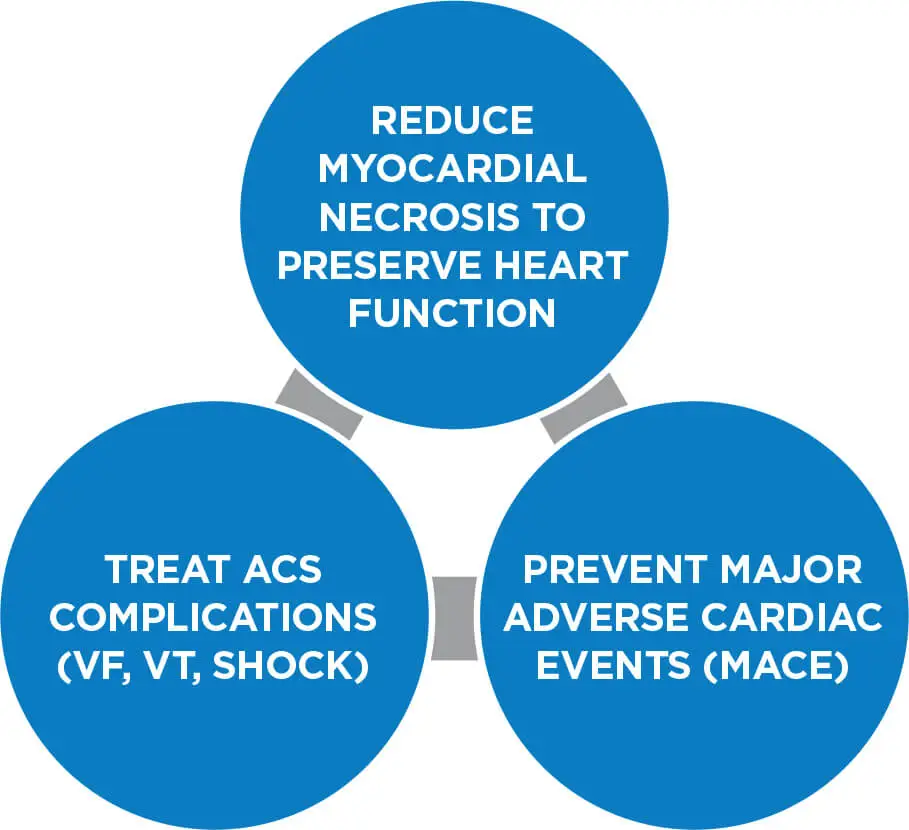(ACS) Acute Coronary Syndrome
Patients with acute coronary syndrome (ACS) require proper care as early as the first call to the EMS. Signs of ACS must be one of the first things that first responders look out for. By quickly treating and diagnosing ACS, you can achieve the highest chance to keep healthy heart tissue safe. It is incredibly crucial for health care providers to identify individuals with ACS or potential ACS, so they can determine timely management, initiate evaluation, and appropriate triage.
ACS Chain of Survival

Figure 15
Goals of ACS Treatment
Through initial and quick EMS communication, preparation of the appropriate personnel and cardiac catheterization lab and staff can be achieved. As soon as the ACS patient is transferred to the proper and informed facility, the established protocols should be engaged to care directly for the patient. The quicker the patient is brought into reperfusion, the greater the amount of heart tissue that providers can rescue, which also results in a better overall outcome for the patient.
Non-fatal myocardial infarction and death are included in major adverse cardiac events (MACE). These life-threatening complications brought about by ACS can include cardiogenic shock, pulmonary edema, bradyarrhythmias, pulseless ventricular tachycardia, and ventricular fibrillation. All qualified EMS personnel must have the training and understanding to administer ECGs on the scene and during the transfer to the hospital. The hospital should be informed of the ACS as soon as possible, specifically when dealing with non-ST-elevation myocardial infarction (NSTEMI) and ST-elevation myocardial infarction elevation (STEMI).

Figure 16
